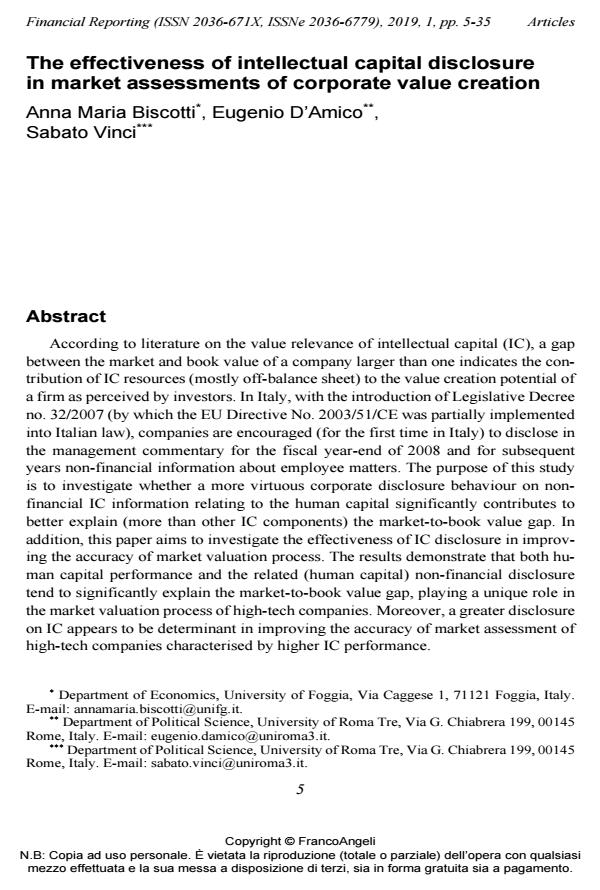The effectiveness of intellectual capital disclosure in market assessments of corporate value creation
Titolo Rivista FINANCIAL REPORTING
Autori/Curatori Anna Maria Biscotti, Eugenio D’Amico, Sabato Vinci
Anno di pubblicazione 2019 Fascicolo 2019/1
Lingua Inglese Numero pagine 31 P. 5-35 Dimensione file 393 KB
DOI 10.3280/FR2019-001001
Il DOI è il codice a barre della proprietà intellettuale: per saperne di più
clicca qui
Qui sotto puoi vedere in anteprima la prima pagina di questo articolo.
Se questo articolo ti interessa, lo puoi acquistare (e scaricare in formato pdf) seguendo le facili indicazioni per acquistare il download credit. Acquista Download Credits per scaricare questo Articolo in formato PDF

FrancoAngeli è membro della Publishers International Linking Association, Inc (PILA)associazione indipendente e non profit per facilitare (attraverso i servizi tecnologici implementati da CrossRef.org) l’accesso degli studiosi ai contenuti digitali nelle pubblicazioni professionali e scientifiche
According to literature on the value relevance of intellectual capital (IC), a gap between the market and book value of a company larger than one indicates the contribution of IC resources (mostly off-balance sheet) to the value creation potential of a firm as perceived by investors. In Italy, with the introduction of Legislative Decree no. 32/2007 (by which the EU Directive No. 2003/51/CE was partially implemented into Italian law), companies are encouraged (for the first time in Italy) to disclose in the management commentary for the fiscal year-end of 2008 and for subsequent years non-financial information about employee matters. The purpose of this study is to investigate whether a more virtuous corporate disclosure behaviour on nonfinancial IC information relating to the human capital significantly contributes to better explain (more than other IC components) the market-to-book value gap. In addition, this paper aims to investigate the effectiveness of IC disclosure in improving the accuracy of market valuation process. The results demonstrate that both human capital performance and the related (human capital) non-financial disclosure tend to significantly explain the market-to-book value gap, playing a unique role in the market valuation process of high-tech companies. Moreover, a greater disclosure on IC appears to be determinant in improving the accuracy of market assessment of high-tech companies characterised by higher IC performance.
Jel codes:M41, M48, M12, G14
- Improving business model disclosure in the annual report: Insights from an interventionist research project Carlo Bagnoli, Antonio Costantini, Maurizio Massaro, in FINANCIAL REPORTING 2/2021 pp.81
DOI: 10.3280/FR2021-002003
Anna Maria Biscotti, Eugenio D’Amico, Sabato Vinci, The effectiveness of intellectual capital disclosure in market assessments of corporate value creation in "FINANCIAL REPORTING" 1/2019, pp 5-35, DOI: 10.3280/FR2019-001001